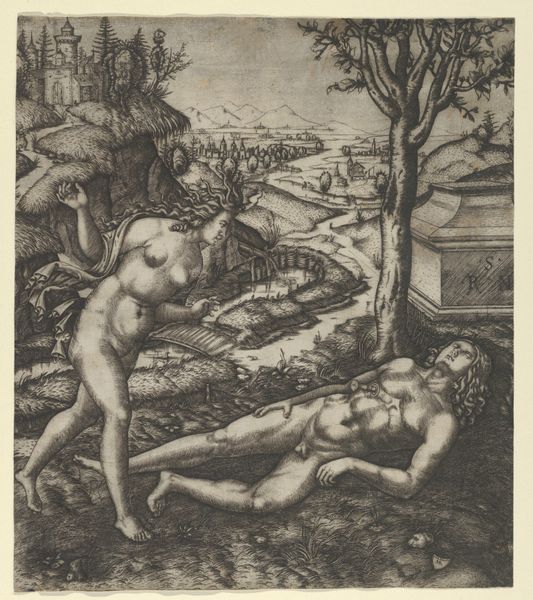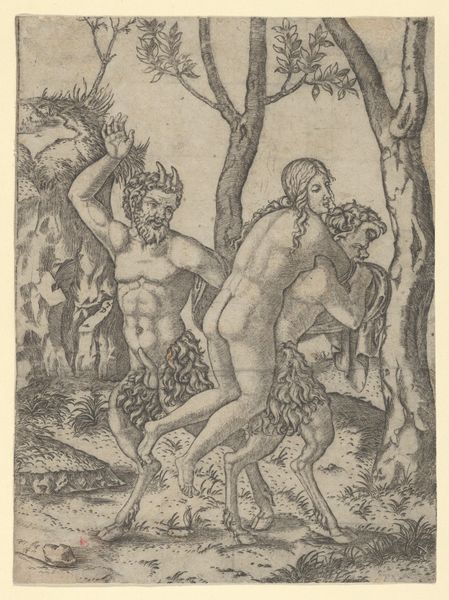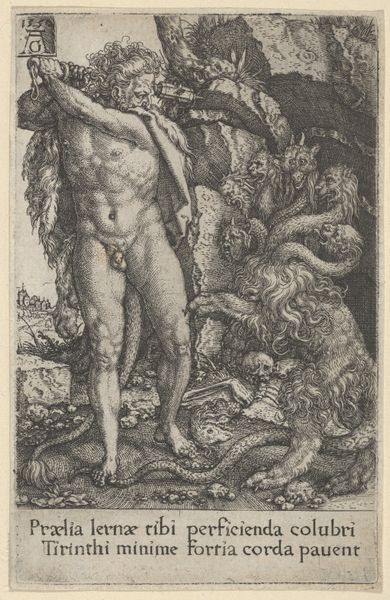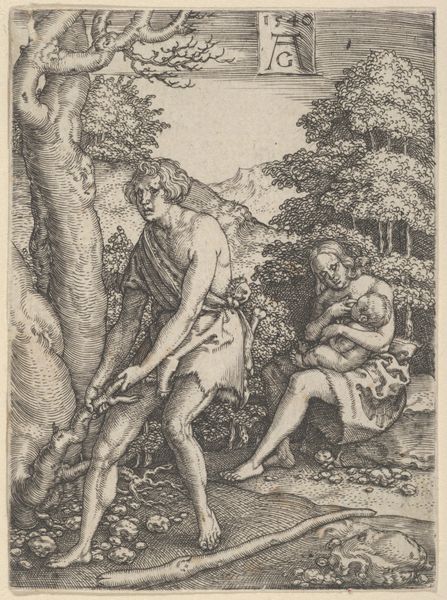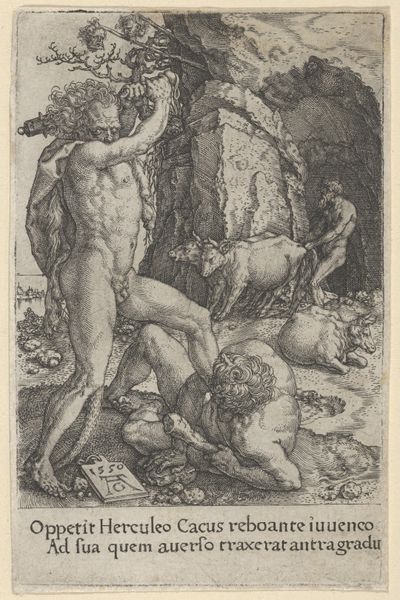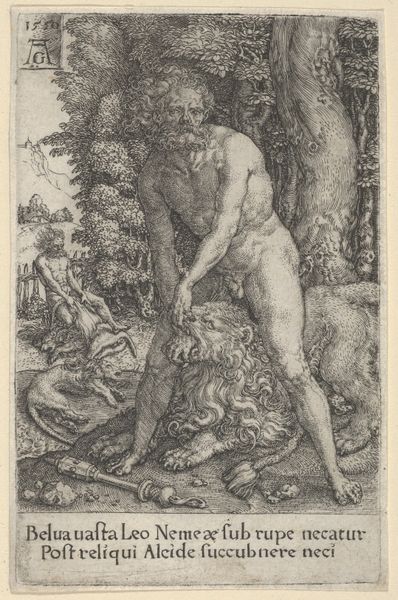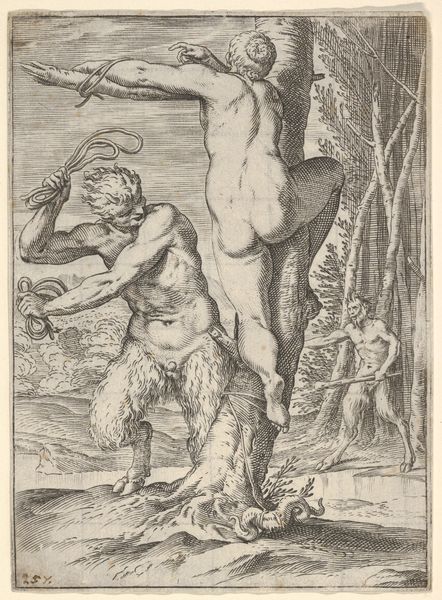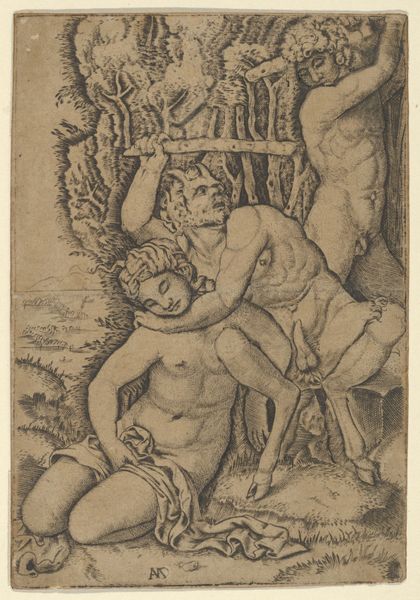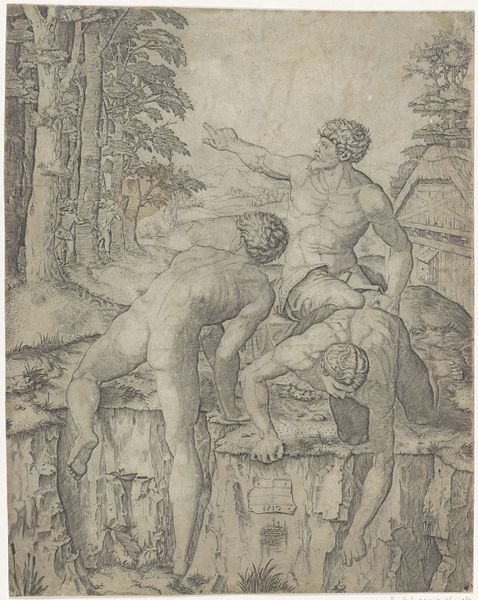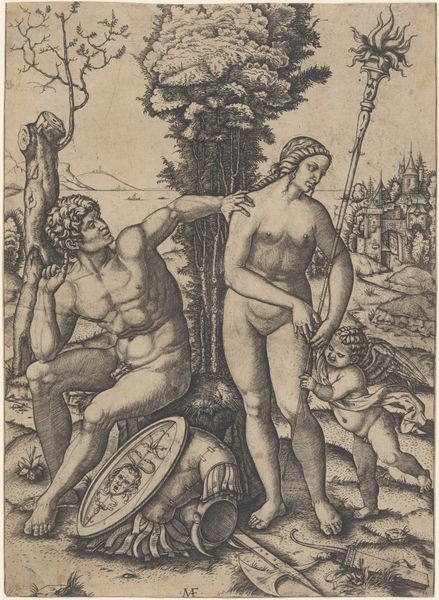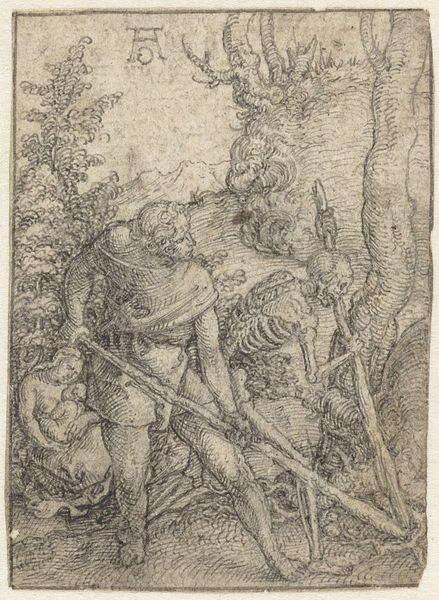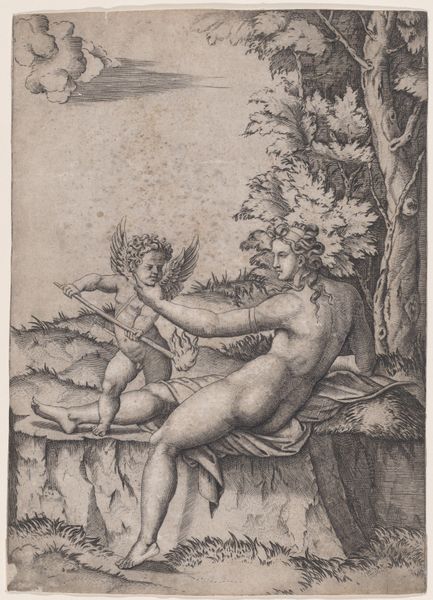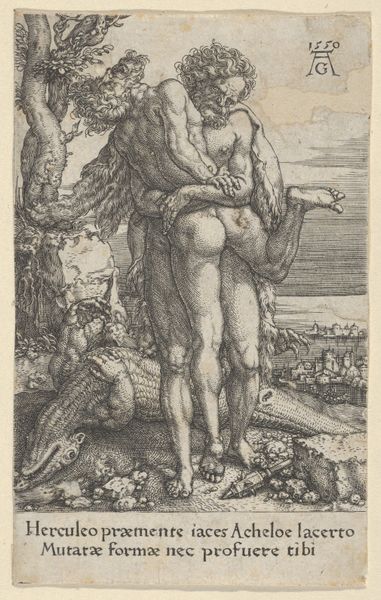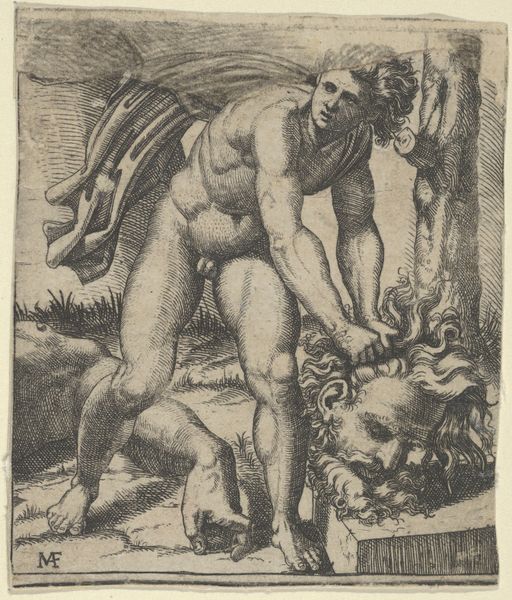
drawing, print, engraving
#
drawing
# print
#
figuration
#
genre-painting
#
italian-renaissance
#
nude
#
engraving
#
erotic-art
Dimensions: 8-11/16 x 7-1/8 in. (22.1 x 18.1 cm)
Copyright: Public Domain
Editor: This engraving is titled *Satyr and Nymph* by Marcantonio Raimondi, created sometime between 1495 and 1539. There's a palpable tension in the composition; the figures seem locked in a moment of charged interaction within a wild, almost theatrical landscape. What do you see in this piece that speaks to its time and context? Curator: It's fascinating to consider this engraving within the burgeoning print culture of the Renaissance. Raimondi, though Italian, was profoundly influenced by Northern artists like Dürer. He adopted the medium of engraving and popularized classical and mythological subjects. Here, we see a moment laden with the complex interplay between classical ideals, which valorized the nude and emphasized idealized forms, and the emerging erotic market for prints. How do you think the act of reproducing this image as a print changes its meaning? Editor: Well, making it reproducible seems to democratize it, bringing classical themes out of aristocratic collections and into broader circulation, and potentially changing its original meaning. I suppose making it accessible as erotic art implies that its meaning relies on distribution. Curator: Precisely! The printing press facilitated new kinds of image consumption. Consider the gaze, then. The satyr is typically depicted as driven by unrestrained desire, but Raimondi depicts restraint, if still somewhat lascivious; while the nymph seems apprehensive. Raimondi's choice of this narrative, circulated through print, suggests not only a taste for classical erotica but a complex engagement with themes of desire, power, and viewership in early modern Europe. This interplay is itself a comment on Italian nobility as powerful figures appropriating symbolic narratives. Do you see ways the figures reference other artistic portrayals? Editor: Now that you mention it, the pose of the Nymph recalls other reclining Venuses of the period! It’s interesting how it transforms from a symbol of love into… this. This new understanding really complicates what I initially perceived! Curator: Indeed. By acknowledging those nuances, we delve deeper into understanding not just what’s depicted, but how it functions within the culture it inhabited.
Comments
No comments
Be the first to comment and join the conversation on the ultimate creative platform.
